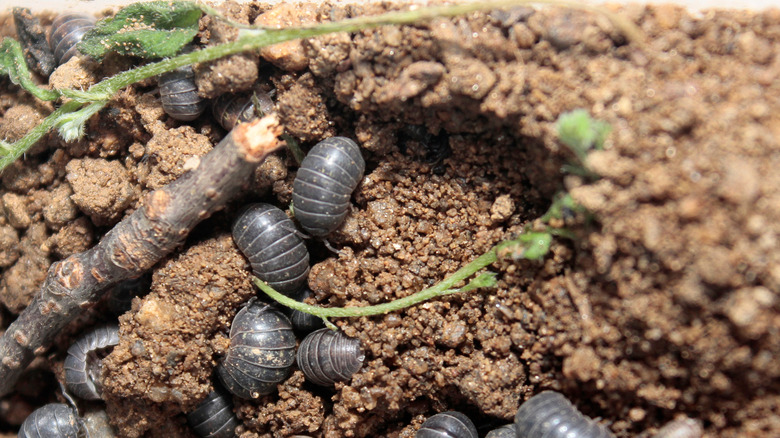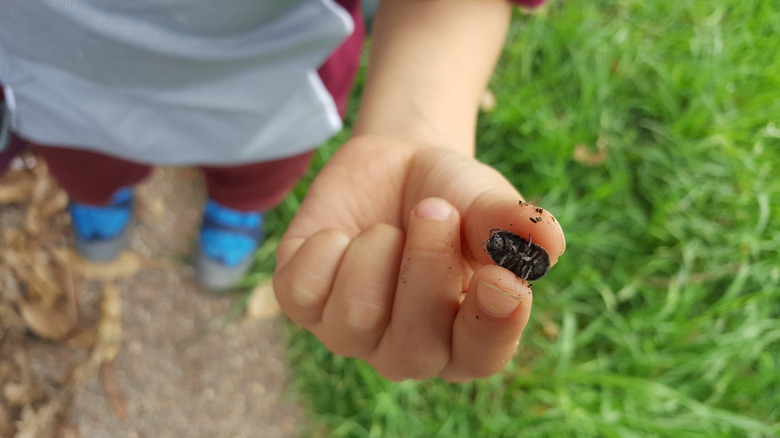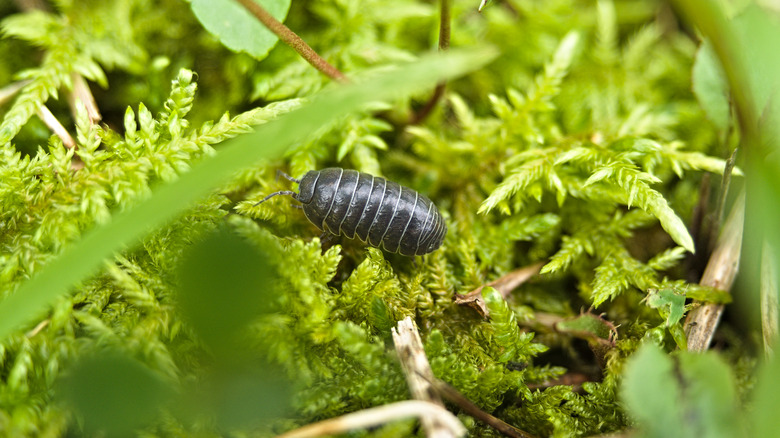Are Roly-Poly Bugs Harmful To Your Garden?
You've likely encountered roly-poly bugs in your garden — those small, armored creatures that curl into tight balls when disturbed. Also known as woodlice, butchy boys, slaters, doodlebugs, wood shrimp, and pill bugs, among other things, they belong to a group of crustaceans but are often mistaken for insects because of their land-dwelling habits. But what exactly are these critters, and what role do they play in an ecosystem? More importantly, do they pose any harm to your garden?
In healthy numbers, roly-polies offer several benefits. They facilitate decomposition as they are natural recyclers that feed on dead and decaying plant matter, thereby helping to break it down into nutrient-rich organic material. In essence, they're the cleanup crew of your garden, working tirelessly to improve soil quality by turning organic matter into nutritious, valuable humus — that dark, nutrient-rich material that enhances soil fertility and water retention. So, when you spot these little "armadillos of the garden" crawling about, know that they have an essential role to play in your garden ecosystem. This is not to say, though, that it's all rainbows and sunshine with roly-polies, as there are certain conditions that can turn them into pests — but more on that later.
Other benefits of roly-poly bugs
While roly-poly bugs may not be the showstoppers of your garden, they quietly provide other valuable benefits besides enriching the earth wherever they are found. First, they assist in soil aeration. As they burrow through the soil in search of decaying matter, roly-poly bugs help aerate the ground, improving soil structure and aiding in root growth. They also play a vital function in nutrient cycling. By breaking down dead plants and leaves, they release essential nutrients like nitrogen and carbon back into the soil. This natural recycling process enriches your garden's nutrient profile, providing a fertile environment for your plants.
Additionally, roly-poly bugs can assist in pest control as they occasionally consume fungi and small insects like stink bugs and their eggs. Aside from eating organic matter, roly-polies also consume heavy metals like lead, cadmium, mercury, and arsenic that contaminate the soil. In biology, due to their sensitivity to environmental changes, roly-polies serve as reliable indicators of the health of an ecosystem.
When roly-poly bugs become pests
While roly-poly bugs offer numerous benefits, there are situations when they can become a nuisance or pose a threat to your garden's well-being. The possibility of them turning into pests generally stems from overpopulation. Roly-poly bugs thrive in damp, moist environments. If your garden becomes excessively wet, they can multiply rapidly, reaching population levels that might exceed the available food supply. When this happens, they might start nibbling on young, tender plant shoots, causing damage to seedlings or delicate garden plants. Also, if there are too many of them, they might compete with earthworms and other beneficial soil organisms for resources. To strike a harmonious balance, ensure your garden maintains proper moisture levels; not too wet nor too dry. Regularly monitor your plants for any signs of damage and take action if necessary, such as removing dead leaves and other organic matter, transferring some of them to areas where they are needed, or by using a desiccant like diatomaceous earth to dry them out.
But as long as the number of roly-poly bugs in your garden is under control, they remain essential players in the ecosystem, offering multiple benefits like soil enrichment, nutrient cycling, and even pest control. However, like any other creature, their role can shift from asset to pest under certain conditions. Understanding their functions in a healthy garden and their habits can help you appreciate these little armored custodians and ensure you manage them effectively.


